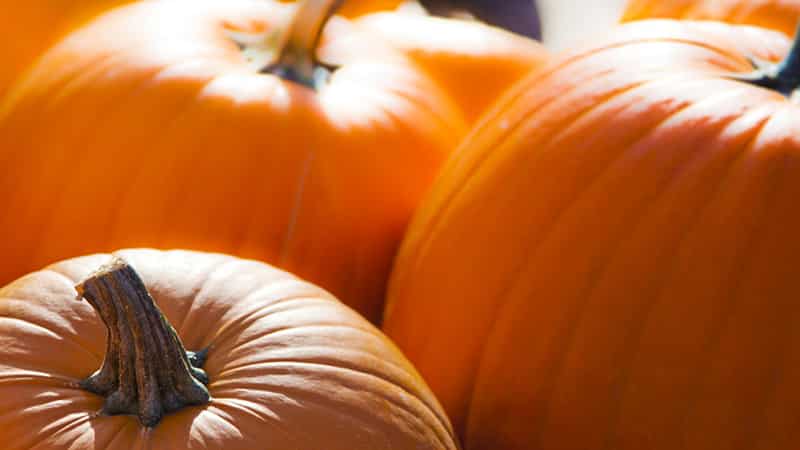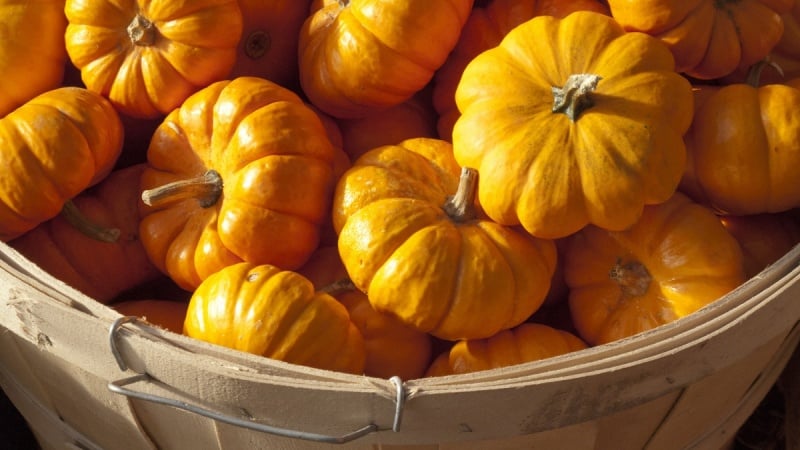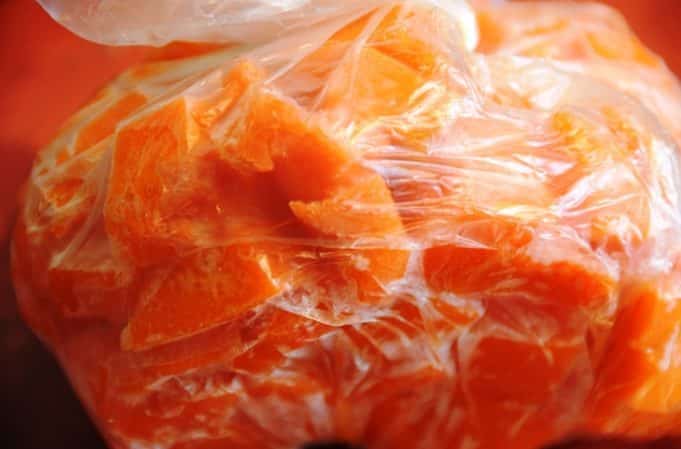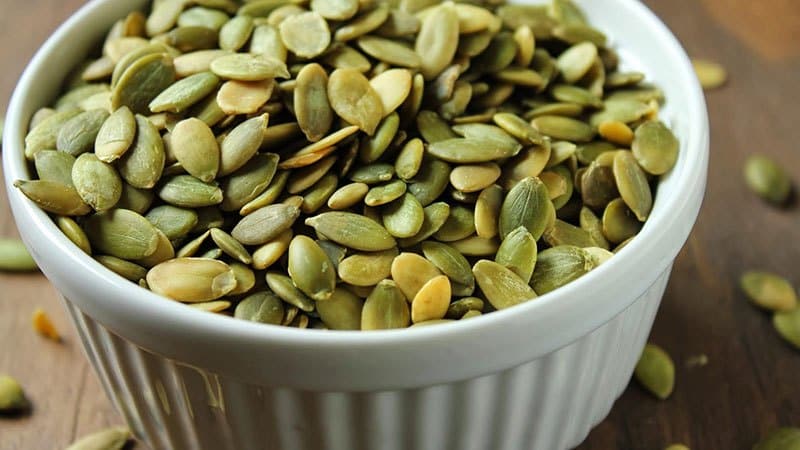How to store pumpkin correctly: different methods and secrets of creating optimal conditions for preserving the vegetable
Pumpkin – a dietary product rich in vitamins and minerals. Regular inclusion of vegetables in the diet helps maintain slimness, youth and health. Pumpkin contains rare vitamin T, which improves metabolism and promotes weight loss.
An amazingly healthy and beautiful vegetable grows well in different climatic conditions, including in central Russia. However, you rarely see it in stores in winter. Therefore, the issue of storing pumpkins grown independently or purchased in the fall is relevant every autumn season. In this article we will tell you how to store pumpkin correctly in order to enjoy this delicious vegetable all winter.
Suitable pumpkin varieties for long-term storage
Mid-ripening and late-ripening pumpkin varieties are leaders in terms of shelf life. Large pumpkins are well protected from diseases and pests by their hard, dense crust.
 Popular mid-season varieties include: Arabatskaya, Zhdanna, Vita, Golosemennaya, Prikubanskaya.
Popular mid-season varieties include: Arabatskaya, Zhdanna, Vita, Golosemennaya, Prikubanskaya.
Among the late-ripening varieties, the following stand out: Vitamin, Pearl, Muscat, Winter sweet, Testi Delight. All of the listed varieties are distinguished by large fruits (round or elongated) and juicy sweet pulp. The average weight of pumpkins ranges from 5 to 20 kg.
Muscat pumpkins retain their taste for up to six months, but only if optimal storage conditions are created.
The right choice of fruits
For long-term storage, select healthy pumpkins without visible damage or dark spots on the skin. The fruits must be strong and fully ripe.
When removed from the garden, specimens intended for storage are left with a long stalk - about 7-10 cm. It is not worth putting pumpkins that do not have a stalk into the cellar. A cut ponytail at the root opens access to microbes and various diseases.
Attention! The stalk should be dry and hard, without signs of rotting. Otherwise, the rot will spread to the pumpkin itself and then to other vegetables.
If the harvest was carried out in wet weather, then the pumpkins are well dried before storing.
Following these recommendations will help you preserve this healthy vegetable until spring:
- When removing from the garden and transporting to a storage location, avoid hitting the pumpkins against each other. Bacteria and fungi penetrate into the fruit through damage in the bark, provoking the process of rotting.
- Harvest in dry, sunny weather.
- Dry the vegetables well before storing them in the cellar.
- Do not carry the pumpkin by the stalk; it may break off under the weight of the fruit.
Places and methods of storage
When choosing a place and method for storing pumpkins, they are guided by the availability of suitable storage, as well as the frequency of consumption.

In the apartment
It is not easy to accommodate heavy fruits in a typical city apartment. Large pumpkins require a lot of space, coolness and darkness. A suitable place is a storage room. In it, pumpkins are laid out on shelves, making sure that the vegetables do not touch each other.
When stored at home, the shelf life of fruits is significantly reduced due to insufficiently low temperatures.Pumpkins are periodically inspected to detect spoilage of the fruit in time.
In the basement/cellar
The best place to store orange beauties is a cellar or basement. However, before you put the pumpkin there, the room needs to be prepared. The storage facility is dried, ventilated, and treated against mold and pests. The shelves are covered with paper or straw.
Optimal conditions for storing pumpkins in a basement or cellar:
- air humidity 70-80%;
- temperature from +3 to +15 °C;
- presence of darkness and ventilation.
When placing pumpkins in storage, keep in mind that the temperature depends on the height relative to the floor. It's always colder near the ground. Therefore, it is best to arrange vegetables on shelves or racks.
On the balcony
If it is not possible to store the pumpkin in a cellar or basement, then shelves on a glassed-in loggia or balcony are suitable for this purpose. Protect fruits from direct sunlight with thick cloth or cardboard. With the onset of cold weather, pumpkins are carefully wrapped. Without insulation, valuable crops will not survive frost.
Important! If it's too cold on the balcony, bring the pumpkin indoors and place it in the pantry or on the floor in a cool room.
In a refrigerator
The refrigerator is one of the best places to store pumpkins for a long time. Temperature and humidity are optimal. But there is not enough space in the refrigerator, so pumpkin is stored in small quantities and mostly chopped.
 The shelf life of chopped vegetables is short - no more than two weeks. You can increase the shelf life if you peel the fruit from the peel and seeds, dry it and wrap it tightly in cling film. Store the chopped pumpkin on the top shelf, where it is coldest.
The shelf life of chopped vegetables is short - no more than two weeks. You can increase the shelf life if you peel the fruit from the peel and seeds, dry it and wrap it tightly in cling film. Store the chopped pumpkin on the top shelf, where it is coldest.
For longer storage, pumpkin pulp is frozen.
In the freezer
Freezing pumpkin not only preserves its taste and vitamins, but also saves time during its further preparation.
Fruits intended for freezing are peeled and cut into convenient size pieces. Small pumpkins are cut in half or into four slices. Larger ones - into small pieces 3-5 cm thick.
The prepared pieces are placed on a tray or baking sheet and placed in the freezer for several hours. After this, the slices are transferred to an airtight container or bag and sent back to the freezer.
Pumpkin puree is good for freezing. The vegetable is ground into a pulp using a blender or grater, placed in small containers and frozen.
Advice. It is convenient to freeze pumpkin puree in ice cube trays. As they freeze, the cubes are transferred to containers or bags.
Defrost the product gradually, transferring it from the freezer to the bottom shelf of the refrigerator.
How long does frozen pumpkin last? The vegetable can be stored in the freezer for up to a year.
What is the best way to store pumpkin for a long time?
In what form is it better to store pumpkin: whole or cut into pieces? Each method has its own advantages and disadvantages.
Entirely
If there is a suitable vegetable storage facility, then the pumpkins are stored whole. This way the pulp retains its taste, beneficial vitamins and minerals longer.
cut
The large fruits of the orange beauty cannot always be used at one time. How to store a cut pumpkin?
If you plan to cook pumpkin dishes again, for example, in a week, then at this time the pieces of pulp can be placed in the refrigerator. The slices wrapped in cling film will keep well for a couple of weeks. To prevent the pieces from drying out, they are lubricated with vegetable oil.
Attention! Freezing pumpkin pulp increases its shelf life to one year.
The same principle applies to storing trimmed pumpkins that were rejected during harvest or spoiled during winter storage.
Terms and conditions of storage
In storage or pantry, it is preferable to store pumpkins on shelves, racks or pallets. Place paper or hay under each one. If there are no shelves, then the pumpkin is stored on the floor, having previously lined it with hay or straw.
The fruits are laid out with their tails up. However, they should not touch each other or the walls of the cellar. It is on the walls that moisture condenses first when temperature changes occur.
For winter storage, specimens are selected without signs of damage or dents, with a dense crust and a woody stalk. Therefore, when harvesting, it is important to handle the fruits carefully, not to throw them or carry them by the tails.
If there are scratches or dents in the rind, the pumpkins won't last long. However, you shouldn’t throw away such fruits either. Rejected specimens are cleaned, seeds removed, cut and sent to the refrigerator or freezer.
Important! Pumpkins without stems are eaten first, as they are more susceptible to rotting.
The same straw will help save the crop from the cold. It fills the free space between the pumpkins and the distance from the fruit to the next rack.
All pumpkins sent for storage in the cellar are periodically inspected. Damaged specimens are removed from the cellar and the hay that was lying around is replaced.
If condensation accumulates on the surface of the fruit, it means that the humidity in the storage is higher than normal. To prevent vegetables from spoiling from excess moisture, the cellar is regularly ventilated.
If all the necessary requirements are met, the pumpkin is perfectly stored until spring, while retaining its taste and nutrients.
Storing pumpkin seeds
When cutting pumpkins, the inner pulp and seeds are often discarded. But in vain, after all pumpkin seeds – a source of vitamins and minerals that stores well all winter.
Drying pumpkin seeds does not require exceptional skills or experience. Any type of pumpkin is suitable for harvesting. The fruits are cut, the seeds are removed, the pulp is removed and washed with water. The healthy delicacy is dried for several days, spread out on a flat surface.
 An oven or electric dryer is also used for preparation. The drying temperature should not exceed 100 °C. The product is ready if the seed shell has become fragile.
An oven or electric dryer is also used for preparation. The drying temperature should not exceed 100 °C. The product is ready if the seed shell has become fragile.
Important! Peeled pumpkin seeds are not suitable for long-term storage. Pumpkin oil oxidizes when exposed to air, and the seeds become bitter.
Store dried seeds in a dry place, in a linen bag or glass container with a lid. The main thing is to prevent the product from becoming damp.
Storage in the form of blanks
Pumpkin is stored not only fresh, but also in the form of preparations. Fully ripened fruits are selected for canning and drying. You can use those specimens that were rejected during harvest due to damage to the rind or lack of a stalk.
Drying pumpkins for the winter
Dried or cured pumpkin good because it completely preserves the taste of the original product. The advantage of this storage method is that when dried, the vegetable decreases significantly in volume. This is important if there is no cellar and there is nowhere in the apartment to store large fresh pumpkins.
Dry the vegetable in an electric dryer or oven at a temperature of 50-60 °C for 6-7 hours.When drying in the oven, keep the door ajar to prevent condensation from accumulating inside.
Immediately before drying, the pumpkin is peeled, seeds and washed. Prepared vegetables are cut into slices half a centimeter thick, blanched for 1-2 minutes in boiling, lightly salted water and allowed to dry.
The finished delicacy is stored in tightly closed containers, the layers are laid out with parchment paper. Delicious slices are eaten as dried fruit or added to soups and porridges. Properly dried pumpkin can be stored for about a year.
Conservation
Among the numerous jars of pickles and tomatoes, there will definitely be a place for pumpkin preparations. This canned beauty will delight you in winter with its unique taste and amazing aroma. Pumpkin is pickled, salted, jams and preserves are made, juices, compotes and assorted dishes are made.
Pumpkin perfectly complements other products in preparations. For example, jam made from pumpkin and dried apricots is delicious. To prepare the delicacy, take 2.5 kg of pumpkin, 1 kg of dried apricots, 40 ml of lemon juice, 2.5 kg of sugar and 2 liters of water.
Cooking process:
- dried apricots are cut, poured with water and left for several hours;
- the pumpkin pulp is cut and boiled for half an hour in the same water in which the dried apricots were soaked;
- add sugar, cook for another half hour;
- add dried apricots and cook until fully cooked.
The finished jam is placed in jars, covered with lids and turned upside down until it cools completely.
Like other homemade preparations, canned pumpkin is stored in a cellar or cool pantry. Canned pumpkin can be stored for 6-9 months.
Conclusion
For those who care about their health and want to maintain youth and beauty, pumpkin is an indispensable assistant. In order for a vegetable to remain useful for a long time, it must be stored properly.
Which pumpkin storage method should you choose? It depends on personal preference and how often you intend to cook with it. If often, then store the vegetable at home in a cool place. If not, opt for cold cellaring or freezing.